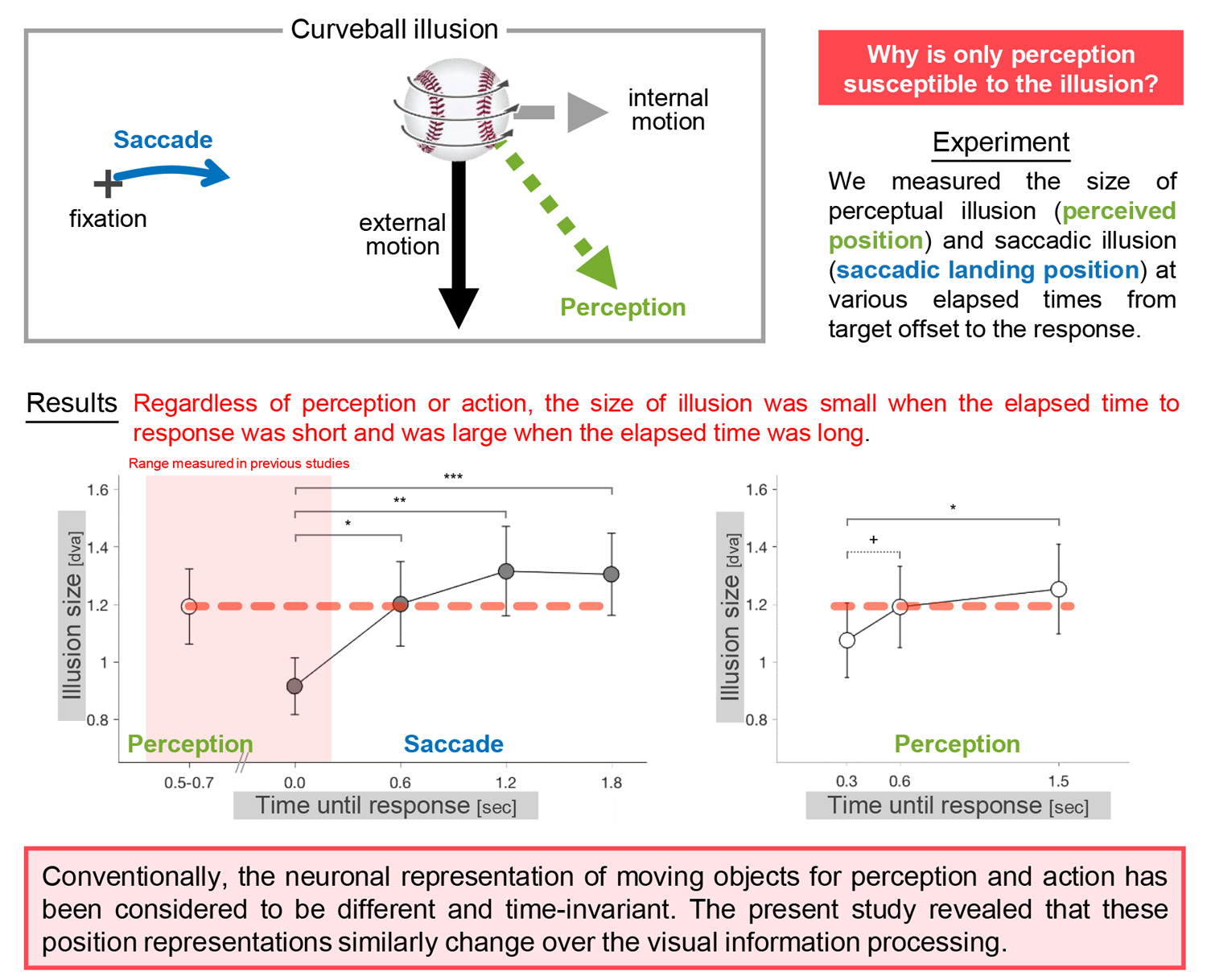
Science of Human
The sooner you decide, the better you can localize
Visual motion processing in the perception and action

Abstract
When an object moves while rotating, the position of the object appears to shift in the direction of rotational motion (curveball illusion). Although this illusion occurs perceptually, no effect on saccadic eye movements has been observed. Here, we studied why only perception (but not eye movement) is susceptible to the illusion.
We found that, regardless of perception or eye movement, the size of illusion was small when the elapsed time from visual input to response was short and was large when the elapsed time was long. This indicates that the timing of judgment is important when localizing moving objects and it does not necessarily improve even if a long time is spent.
The present study shows the importance of the time from the input of visual motion to decision making. These findings would be useful to make applications for athletes' training and UI design encouraging appropriate perceptual judgment and motor response to visual signals.
The present study shows the importance of the time from the input of visual motion to decision making. These findings would be useful to make applications for athletes' training and UI design encouraging appropriate perceptual judgment and motor response to visual signals.
Reference
- [1] H. Ueda, N. Abekawa, H. Gomi, “Temporal integration of sensory evidence for position representation of a moving object containing motion signal in perceptual and motor decision making,” in Proc. The 44th Naito Conference on Decision Making in the Brain―Motivation, Prediction, and Learning, 2017.
[2] H. Ueda, N. Abekawa, H. Gomi, “Temporal change of position representation of a moving object filled with Gabor motion for saccadic eye movements” in Proc. The 46th Annual Meeting of the Society for Neuroscience, 2016.
Poster
Photos
Presenters

Hiroshi Ueda
Sports Brain Science Project
Sports Brain Science Project



